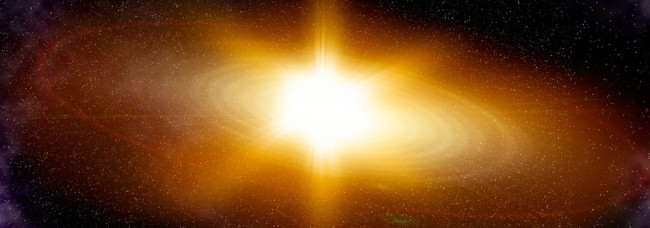 It’s Nobel Prize time again and today we find out who wins the Prize for Physics. This one usually excites because it is often somebody well-known, or for something well deserved – they really do get this one right year after year.
It’s Nobel Prize time again and today we find out who wins the Prize for Physics. This one usually excites because it is often somebody well-known, or for something well deserved – they really do get this one right year after year.
Awarded annually since 1901 (except in 1940, 41 and 42) the nomination and selection process for the prize in Physics is long and rigorous. It starts with several thousand people being asked to nominate candidates, and these names are then scrutinised and discussed by experts until the choice is made.
Great care is taken, their rules require that the significance of achievements being recognized has been “tested by time.” In practice it means that the lag between the discovery and the award is typically on the order of 20 years and can be much longer, and so the one key constraint (at award time you do still need to be breathing) can result in a few who really should have received one not getting one.
This rigour is perhaps a key reason why it has grown in importance over the years to become the most important prize in Physics.
So here are a few fun numbers …
- 108 – Nobel Prizes in Physics have been awarded between 1901-2014.
- 47 – Physics Prizes have been given to one Laureate only.
- 2 – women have been awarded the Physics Prize so far.
- 1 – person, John Bardeen, has been awarded the Physics Prize twice.
- 25 – years was the age of the youngest Physics Laureate ever, Lawrence Bragg, when he was awarded the 1915 Physics Prize together with his father.
- 55 -is the average age of the Physics Laureates the year they were awarded the prize.
So who has won in the past?
Lots of well-known names … Einstein, Bohr, Heisenberg, Schrödinger, Fermi, Pauli, Feynman, etc…
And the winners this year are …
Takaaki KajitaPrize share: 1/2 |
Arthur B. McDonaldPrize share: 1/2 |
The Nobel Prize in Physics 2015 was awarded jointly to Takaaki Kajita and Arthur B. McDonald “for the discovery of neutrino oscillations, which shows that neutrinos have mass”
Details from the press release…
The Nobel Prize in Physics 2015 recognises Takaaki Kajita in Japan and Arthur B. McDonald in Canada, for their key contributions to the experiments which demonstrated that neutrinos change identities. This metamorphosis requires that neutrinos have mass. The discovery has changed our understanding of the innermost workings of matter and can prove crucial to our view of the universe.
Around the turn of the millennium, Takaaki Kajita presented the discovery that neutrinos from the atmosphere switch between two identities on their way to the Super-Kamiokande detector in Japan.
Meanwhile, the research group in Canada led by Arthur B. McDonald could demonstrate that the neutrinos from the Sun were not disappearing on their way to Earth. Instead they were captured with a different identity when arriving to the Sudbury Neutrino Observatory.
A neutrino puzzle that physicists had wrestled with for decades had been resolved. Compared to theoretical calculations of the number of neutrinos, up to two thirds of the neutrinos were missing in measurements performed on Earth. Now, the two experiments discovered that the neutrinos had changed identities.
The discovery led to the far-reaching conclusion that neutrinos, which for a long time were considered massless, must have some mass, however small.
For particle physics this was a historic discovery. Its Standard Model of the innermost workings of matter had been incredibly successful, having resisted all experimental challenges for more than twenty years. However, as it requires neutrinos to be massless, the new observations had clearly showed that the Standard Model cannot be the complete theory of the fundamental constituents of the universe.
The discovery rewarded with this year’s Nobel Prize in Physics have yielded crucial insights into the all but hidden world of neutrinos. After photons, the particles of light, neutrinos are the most numerous in the entire cosmos. The Earth is constantly bombarded by them.
Many neutrinos are created in reactions between cosmic radiation and the Earth’s atmosphere. Others are produced in nuclear reactions inside the Sun. Thousands of billions of neutrinos are streaming through our bodies each second. Hardly anything can stop them passing; neutrinos are nature’s most elusive elementary particles.
Now the experiments continue and intense activity is underway worldwide in order to capture neutrinos and examine their properties. New discoveries about their deepest secrets are expected to change our current understanding of the history, structure and future fate of the universe.
| Read more about this year’s prize |
| Information for the Public Pdf 2.5 MB |
| Scientific Background Pdf 800 kB |
Image – Sudbury Neutrino Observatory (SNO) (800 kB)
Image – Superkamiokande, Kamioka, Japan (800 kB)
Takaaki Kajita, Japanese citizen. Born 1959 in Higashimatsuyama, Japan. Ph.D. 1986 from University of Tokyo, Japan. Director of Institute for Cosmic Ray Research and Professor at University of Tokyo, Kashiwa, Japan.
www.icrr.u-tokyo.ac.jp/about/greeting_eng.html
Arthur B. McDonald, Canadian citizen. Born 1943 in Sydney, Canada. Ph.D. 1969 from Californa Institute of Technology, Pasadena, CA, USA. Professor Emeritus at Queen’s University, Kingston, Canada.
www.queensu.ca/physics/arthur-mcdonald
Prize amount: SEK 8 million, to be shared equally between the Laureates.